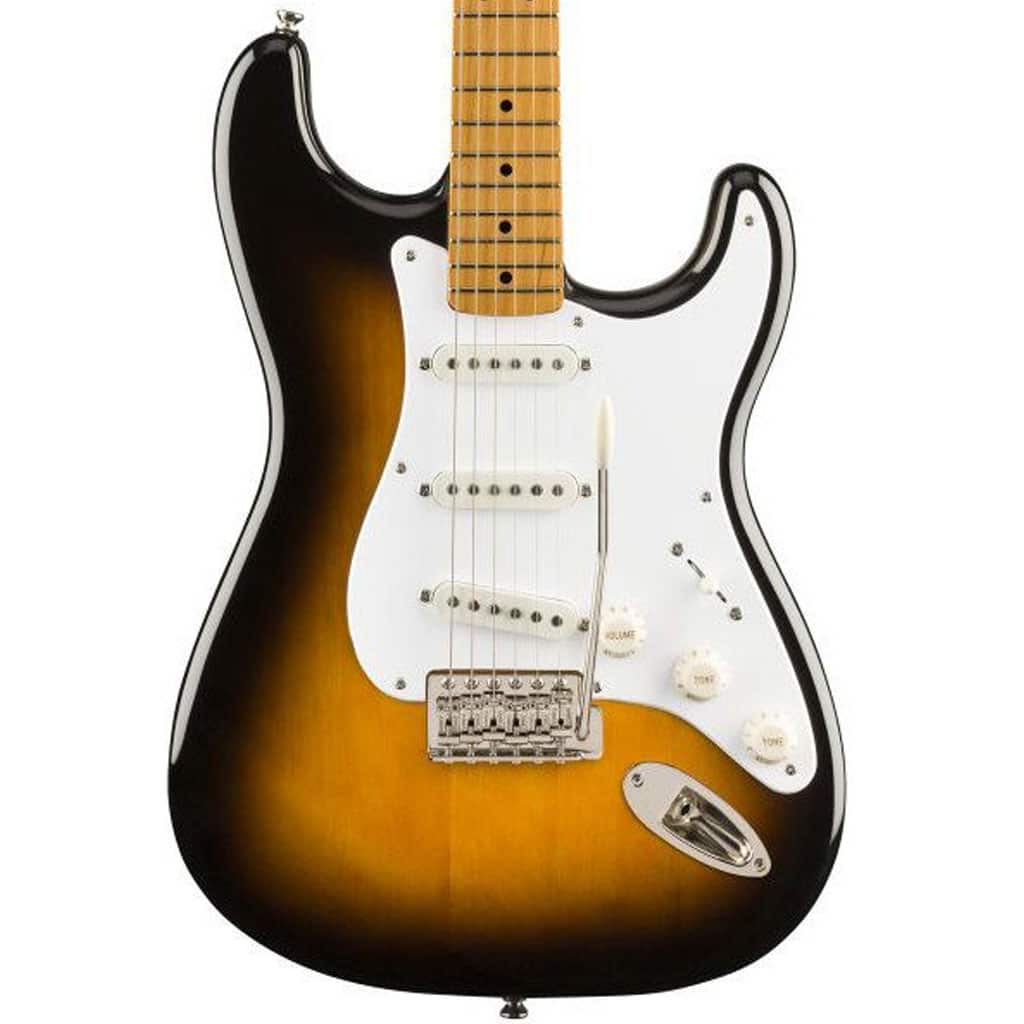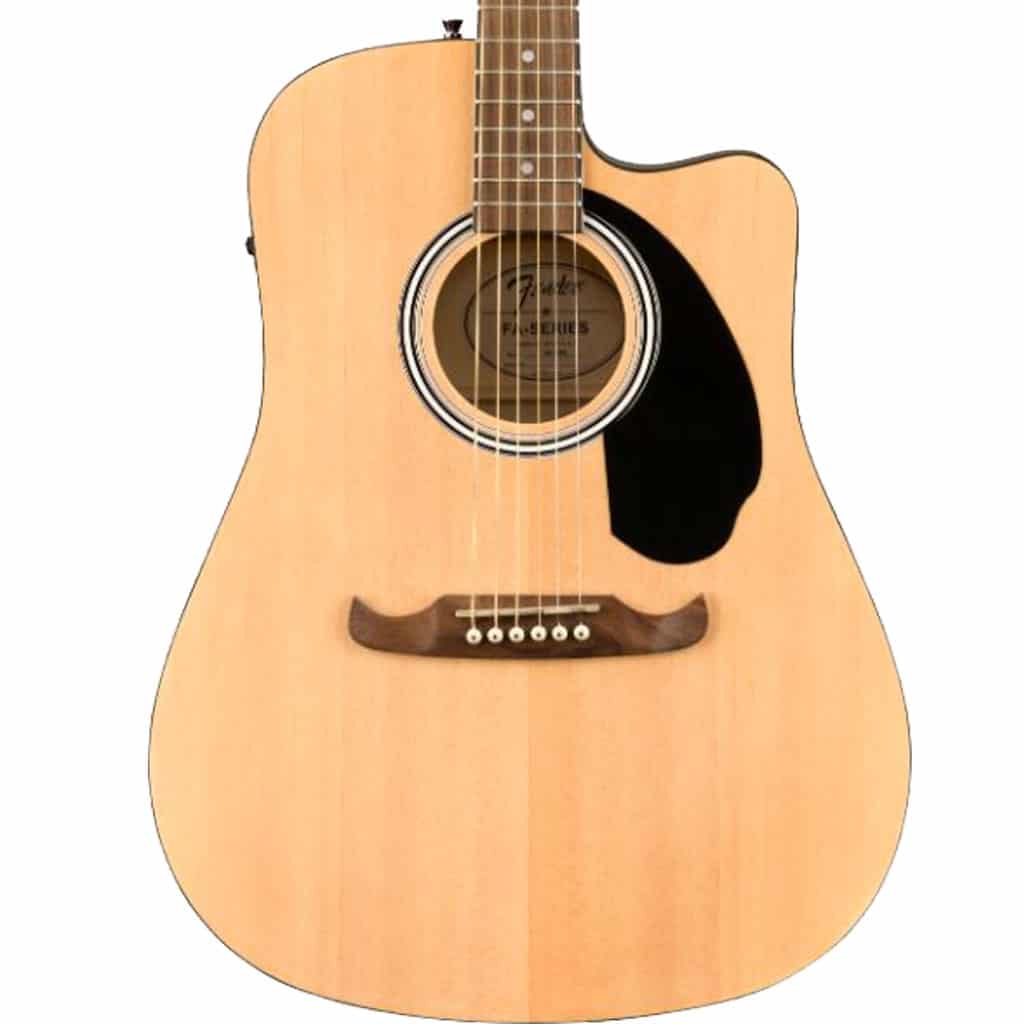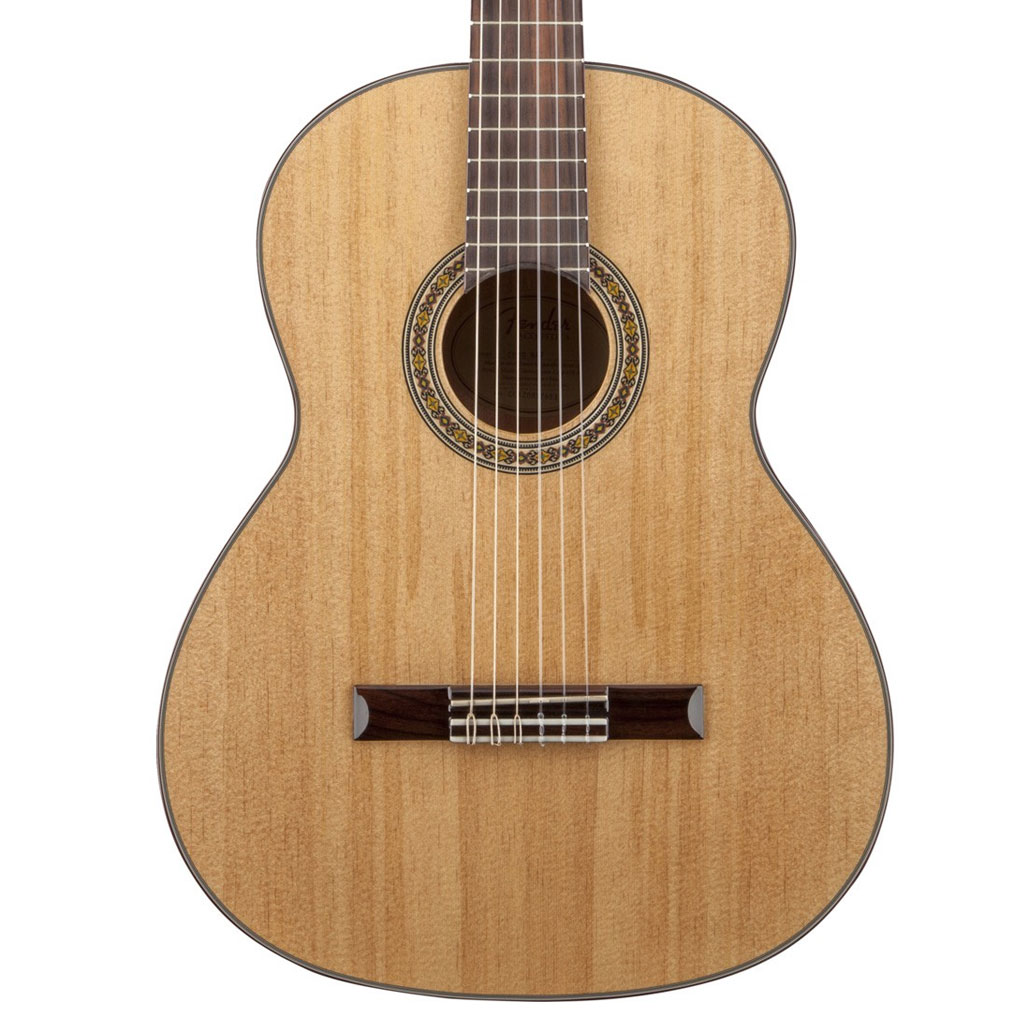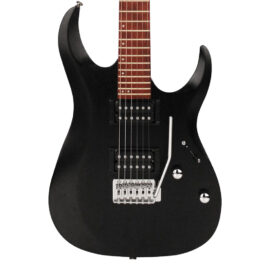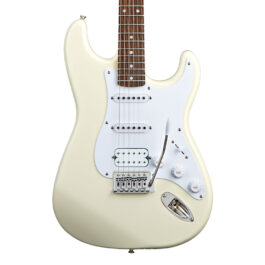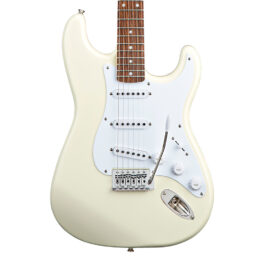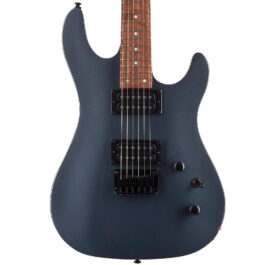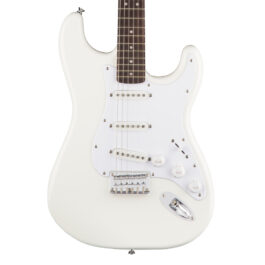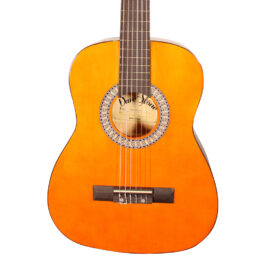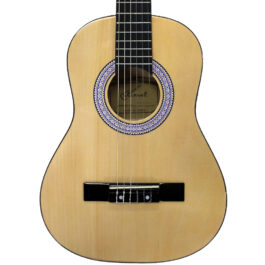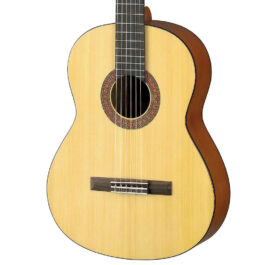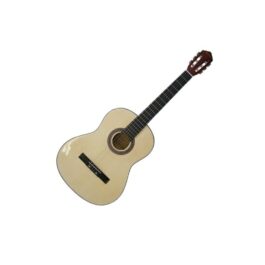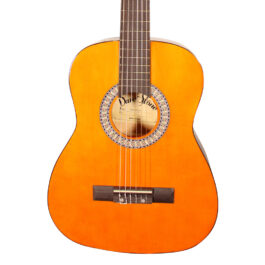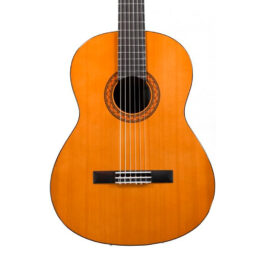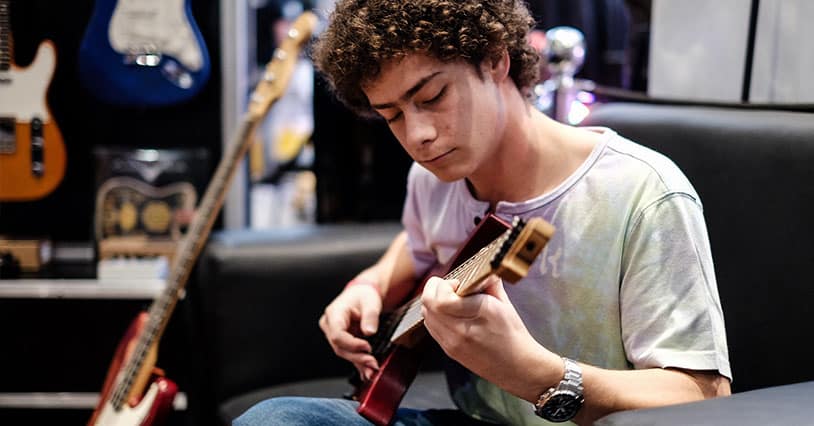
Buying your first guitar is easy. All you need to do is pay for the first guitar that comes your way, and you’re done. And yet, buying a guitar that you can actually learn on has a bit more nuance. You need to consider details like action, the fun factor, and overall instrument quality. This Guitar Buyers Guide aims to take the guess work out of buying your first guitar.
GUITAR TYPES
Ultimately, you need to want to pick up your guitar. It needs to be a toy that you can’t put down. So getting the style or type of guitar that inspires you is the most important step. There are three major types of guitars; electric, acoustic, and classical.
If you really like heavy metal, then a traditional classical guitar wouldn’t be the right option for you. You would need an electric guitar and an amp with built in distortion. In contrast, if you like acoustic folk music, an electric guitar won’t do you any good.
Old school guitar teachers used to insist that players start with traditional gut string guitars (classical guitars), but more and more modern teachers believe that if you want to play electric guitar, then buy one as your first guitar.
While there is some nuance and overlap in most genres, consider the type of music you enjoy, and investigate what type of guitar is most prominent in that type of music!
It is important to note that if you are looking for an electric guitar, in order for it to produce sound, you will need an amplifier to accompany it! Take a look at our Guitar Amp Buyer’s Guide to find the perfect amp for you!
SOME BASICS YOU CAN'T MISS OUT ON
Basic Quality – When purchasing a reputable brand from a reputable retailer, a lot of the guess work is removed automatically. Here at Bothners we stock some of the most reliable and trusted brands in the world, and pride ourselves on curating stock that provides maximum value to you, the consumer, allowing you to rest easy in knowing you’re purchasing quality items.
Tuning – All guitars go out of tune, this is normal. Be sure to purchase an electronic guitar tuner with your first guitar. Playing the right thing on an out of tune guitar will make it sound as if you are making mistakes even when you aren’t!
Gig-Bag – Make sure to get a gig bag, and keep your guitar in the bag whenever you are not playing it -this will help the strings last a lot longer
-
- Electric Guitars, Guitar & Bass
Cort CR100 Electric Guitar – Black
-
R7,150R5,299FREE DELIVERY - Select options
-
Request Stock
- Out of Stock
- Electric Guitars, Guitar & Bass
Cort G100 Electric Guitar – Open Pore Black
-
R4,095R3,480FREE DELIVERY - Select options
-
-
Request Stock
- Out of Stock
- Guitar & Bass, Electric Guitars
Cort X100 Electric Guitar – Open Pore Black
-
R4,995R3,745FREE DELIVERY - Select options
-
-
Request Stock
- Out of Stock
- Electric Guitars, Guitar & Bass
Squier Bullet Stratocaster HSS Electric Guitar – Tremolo – Arctic White
-
R5,395R3,895FREE DELIVERY - Select options
-
-
Request Stock
- Out of Stock
- Guitar & Bass, Electric Guitars
Squier Bullet Stratocaster® Electric Guitar – Tremolo – Arctic White
- R5,995FREE DELIVERY
- Select options
-
-
Request Stock
- Out of Stock
- Electric Guitars, Guitar & Bass
Cort G100 Electric Guitar – Open Pore Black Cherry
-
R3,395R2,890FREE DELIVERY - Select options
-
-
Request Stock
- Out of Stock
- Guitar & Bass, Electric Guitars
Cort KX100 Electric Guitar – Metallic Ash
-
R6,550R4,585FREE DELIVERY - Select options
-
-
Request Stock
- Out of Stock
- Guitar & Bass, Electric Guitars
Squier Bullet Stratocaster ® Electric Guitar – Hardtail – Arctic White
- R5,895FREE DELIVERY
- Select options
-
FIRST POINTS TO CHECK ON YOUR NEW GUITAR
Action
The action of the guitar is the distance between the strings and the fretboard of the guitar. The higher the strings are, the harder it is to push them down. When you start playing, your fingers will get sore. This pain will be amplified if you have to push harder than you really need to.
But beware, if you lower the action too much, you can end up with fret buzz. So it is best to look at as a bit of a balancing act.
We offer full guitar set-ups at our stores nationwide, so feel free to head into your nearest store and have your guitar setup and optimized by a pro!
String Gauge
String gauge is the thickness or hardness of the strings. A thinner/lighter gauge is easier to play than a thicker/heavier gauge. The drawback of the thinner gauge, however, is that the guitar will be quieter. This is especially true of acoustic guitars.
To start learning on, there is no reason to not go for the lightest gauge that your guitar can handle. You can experiment with different brands and gauges of strings as you get more experience with playing.
-
Request Stock
- Out of Stock
- Classical Guitars, Guitar & Bass
Darestone 3/4 Size Classical Guitar
-
R1,249R900FREE DELIVERY - Select options
-
-
Request Stock
- Out of Stock
- Classical Guitars, Guitar & Bass
Maxwell MXC341 1/2 Size Classical Guitar
-
R1,445R1,085FREE DELIVERY - Select options
-
-
- Guitar & Bass, Classical Guitars
Yamaha C40M Classical Guitar
-
R3,270R2,500FREE DELIVERY - Select options
-
Request Stock
- Out of Stock
- Classical Guitars, Guitar & Bass
Darestone Full-Size Classical Guitar
-
R1,395R1,005FREE DELIVERY - Select options
-
-
Request Stock
- Out of Stock
- Classical Guitars, Guitar & Bass
Maxwell MXC361 3/4 Size Classical Guitar
-
R1,445R1,255FREE DELIVERY - Select options
-
-
Request Stock
- Out of Stock
- Classical Guitars, Guitar & Bass
Darestone 1/2 Size Classical Guitar – Natural
-
R1,195R860FREE DELIVERY - Select options
-
-
Request Stock
- Out of Stock
- Guitar & Bass, Classical Guitars
Maxwell MXC391 Full Size Classical Guitar
-
R1,495R1,195FREE DELIVERY - Select options
-
-
- Guitar & Bass, Classical Guitars
Yamaha C45 Nylon String Classical Guitar
-
R3,020R2,500FREE DELIVERY - Select options
AFTER-SALE SERVICE
When you get your first guitar, it should be something that will last you for years. A music store that offers after-sale service is an essential piece of the puzzle. Even if nothing ever goes wrong with the guitar, you will still need to have new strings put on the guitar fairly regularly, depending on how often you play. Some players change their strings as often as every 3 weeks!


